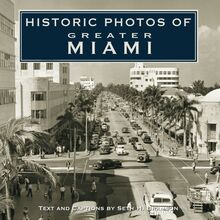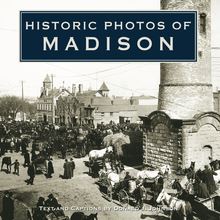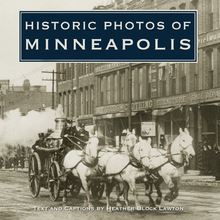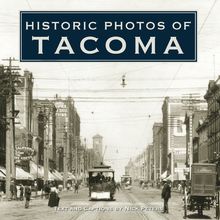Historic Photos of Anaheim , livre ebook
178
pages
English
Ebooks
2007
Vous pourrez modifier la taille du texte de cet ouvrage
Obtenez un accès à la bibliothèque pour le consulter en ligne En savoir plus
Découvre YouScribe en t'inscrivant gratuitement
Découvre YouScribe en t'inscrivant gratuitement
178
pages
English
Ebooks
2007
Vous pourrez modifier la taille du texte de cet ouvrage
Obtenez un accès à la bibliothèque pour le consulter en ligne En savoir plus
Publié par
Date de parution
01 mars 2007
Nombre de lectures
4
EAN13
9781618585950
Langue
English
Poids de l'ouvrage
11 Mo
Publié par
Date de parution
01 mars 2007
Nombre de lectures
4
EAN13
9781618585950
Langue
English
Poids de l'ouvrage
11 Mo
HISTORIC PHOTOS OF
ANAHEIM
T EXT AND C APTIONS BY S TEPHEN J. F AESSEL
This aerial view of Anaheim was snapped on July 14, 1953, and begins to show the growth of the community outward from its downtown core. By now many of the area s orange groves were being paved over for housing-the city s population had surpassed 22,000, an increase of more than 7,000 in just two years. By 1955, Anaheim would embark on a journey that would make it the entertainment and tourism destination for Southern California.
HISTORIC PHOTOS OF
ANAHEIM
Turner Publishing Company
200 4th Avenue North Suite 950
Nashville, Tennessee 37219
(615) 255-2665
www.turnerpublishing.com
Historic Photos of Anaheim
Copyright 2007 Turner Publishing Company
All rights reserved.
This book or any part thereof may not be reproduced or transmitted in any form or by any means, electronic or mechanical, including photocopying, recording, or by any information storage and retrieval system, without permission in writing from the publisher.
Library of Congress Control Number: 2007923452
ISBN-13: 978-1-59652-333-3
ISBN: 1-59652-333-6
Printed in the United States of America
08 09 10 11 12 13 14 15-0 9 8 7 6 5 4 3 2
C ONTENTS
A CKNOWLEDGMENTS
P REFACE
T HE M OTHER C OLONY (1865-1899)
C ITRICULTURE B RINGS G ROWTH (1900-1939)
A C ITY I S B ORN (1940-1953)
W HERE THE W ORLD C OMES TO P LAY (1954-1970 S )
N OTES ON THE P HOTOGRAPHS
Reinforcing Anaheim s position as an international destination, on December 21, 1976, Anaheim signed its first Sister City agreement with Mito, Japan. We see Anaheim Mayor Bill Thom and Mayor Pro Tem John Seymour join Yunosuke Wada the Mayor and Kan Kimura, Chairman of the City Council of Mito, Japan, in ratifying the official declaration. The Sister City program gives communities of different nations a forum to share ideas and information. In 1998, Anaheim s second Sister City became Victoria-Gasteiz, of Spain.
A CKNOWLEDGMENTS
This volume, Historic Photos of Anaheim , is the result of the cooperation and efforts of many individuals, organizations, and corporations. It is with great thanks that we acknowledge, in particular, the valuable contribution of the Anaheim Public Library for their generous support.
We would also like to thank Stephen J. Faessel, our writer, for valuable contributions and assistance in making this work possible.
-----
As the author, I would like to thank Ms. Jane Newell, Local History Curator of the Elizabeth J. Schultz History Room, Anaheim Public Library, for her very generous assistance and support in the creation of this book. Mrs. Ymelda Ventura and Mr. Sal Addotta, History Room staff, have also contributed their time and encouragement to this project. Thanks to a special friend, Marcie, for enlightened guidance.
Finally, I must acknowledge the loving assistance of my wife, Susan, for her unwavering support of this undertaking. Without her it would not have been completed.
P REFACE
Anaheim has thousands of historic photographs that reside in archives, both locally and nationally. This book began with the observation that, while those photographs are of great interest to many, they are not easily accessible. During a time when Anaheim is looking ahead and evaluating its future course, many people are asking, How do we treat the past? These decisions affect every aspect of the city-architecture, public spaces, commerce, infrastructure-and these, in turn, affect the way that people live their lives. This book seeks to provide easy access to a valuable, objective look into the history of Anaheim.
The power of photographs is that they are less subjective than words in their treatment of history. Although the photographer can make decisions regarding subject matter and how to capture and present it, photographs do not provide the breadth of interpretation that text does. For this reason, they offer an original, untainted perspective that allows the viewer to interpret and observe.
This project represents countless hours of review and research. The researchers and writer have reviewed thousands of photographs in numerous archives. We greatly appreciate the generous assistance of the individuals and organizations listed in the acknowledgments of this work, without whom this project could not have been completed.
The goal in publishing this work is to provide broader access to this set of extraordinary photographs that seek to inspire, provide perspective, and evoke insight that might assist people who are responsible for determining Anaheim s future. In addition, the book seeks to preserve the past with adequate respect and reverence.
With the exception of touching up imperfections caused by the vicissitudes of time and cropping where necessary, no other changes have been made. The focus and clarity of many images is limited to the technology and the ability of the photographer at the time they were taken.
The work is divided into eras. Beginning with some of the earliest known photographs of Anaheim, the first section features images from the earliest period, 1865 through 1899, with a focus on Anaheim s vineyards. The second section spans the years 1900 to 1939, taking a look at the city s citrus industry. Section Three moves from 1940 and the World War II era to 1953. The last section covers the years 1954, with the advent of Disneyland, forward to recent times.
In each of these sections we have made an effort to capture various aspects of life through our selection of photographs. People, commerce, transportation, infrastructure, religious institutions, and educational institutions have been included to provide a broad perspective.
We encourage readers to reflect as they go walking in Anaheim, strolling through the city, or wandering its parks and neighborhoods. It is the publisher s hope that in utilizing this work, longtime residents will learn something new and that new residents will gain a perspective on where Anaheim has been, so that each can contribute to its future.
Todd Bottorff, Publisher
German born, George Hansen was hired by the Los Angeles Vineyard Society as their superintendent. A deputy surveyor and civil engineer, he was able to locate suitable land and water rights in the Southern California area on which the society could build their model community of Anaheim. For his efforts in both locating and laying out the town, he became known as the Father of Anaheim.
T HE M OTHER C OLONY
(1865-1899)
The name Anaheim , a combination of Spanish and German, meaning home on the Santa Ana River, was founded in 1857 by a group of 50 German immigrants living in San Francisco. John Froehling and Charles Kohler, both Germans by birth, needed greater vineyard capacity for their rapidly growing Los Angeles wine business. The two partners, along with other San Francisco investors, organized themselves as the Los Angeles Vineyard Society with the goal of establishing a colony of vineyardists in Southern California.
One of their first orders of business was to hire a superintendent to find a suitable location and secure the necessary land and water rights. The society had the good fortune of hiring a fellow German, George Hansen, a deputy Los Angeles County surveyor who was already familiar with the Southern California area through his surveys undertaken in 1855. Unable to finalize a land purchase with a number of landowners, Hansen made contact with Juan Pacifico Ontiveros, whose Rancho San Juan Cajon de Santa Ana he had earlier surveyed. The Ontiveros Rancho, a 35,970-acre Spanish Land Grant, adjoined the Santa Ana River, which was not wholly dependable as a water source. Regardless, a deal was struck on September 12, 1857, to buy 1,165 acres at $2 an acre on behalf of the impatient San Francisco investors. An easement for a water canal connecting the town site to the Santa Ana River was arranged with neighboring landowner Bernardo Yorba.
With land in hand and assured of a water source, Hansen began to lay out the town s 20-acre vineyard lots, employing American Indian and Mexican laborers, who called the settlement Campo Aleman, or German Country. By 1859, an irrigation system had been installed and the Mission grapes planted by Hansen were beginning to take root. By 1864, more than 300,000 gallons of wine a year were being produced from Anaheim s 400,000 vines.
The colonists were a group of talented, well-educated gentlemen and ladies with only one having any wine-making experience. Nevertheless, the community thrived and a small downtown was built. Churches and schools soon followed, as did the requisite social and fraternal clubs and lodge halls. The region s first newspaper, the Anaheim Gazette , was started in 1870, the Southern Pacific Railroad arrived in 1875, and the thrifty Germans installed their own municipal water system in 1879. By 1880, Anaheim had become the second-largest town in Los Angeles County.
This 1858 view shows August Langenberger s two-story adobe store and residence. In 1857, Langenberger, the son-in-law of Juan Pacifico Ontiveros, partnered with another Anaheim pioneer, Benjamin Dreyfus, to start the town s first general store. The Langenberger s home was on the second floor and an adjoining large room was used for dances and other social functions. Ruggedly built, the adobe survived the historic flood of 1862 and was finally razed in 1915 to make way for a business block of modern buildings.
This double portrait shows Juan Pacifico Ontiveros and his wife, Maria Martina Osuna, who in 1857 sold for $2 an acre 1,165 acres of their Rancho San Juan Cajon de Santa Ana to the Los Angeles Vineyard Society s pioneers. Ontiveros later described the land as too poor to support a single goat.
Anaheim s second mayor, Henry Kroeger, built the Anaheim Hotel at the southwest corner of Lemon and Center (now Lincoln Ave.) streets in 1871. Advertised with well lighted and heated rooms the interior furnishings were of high quality. Max Nebe














